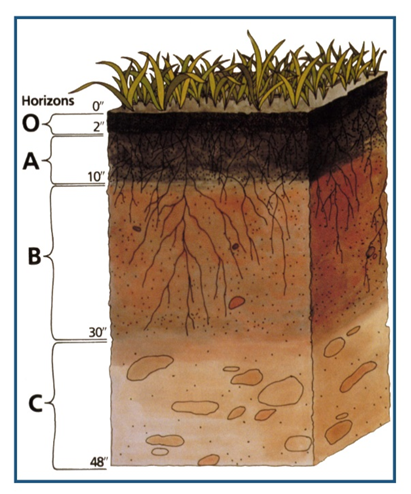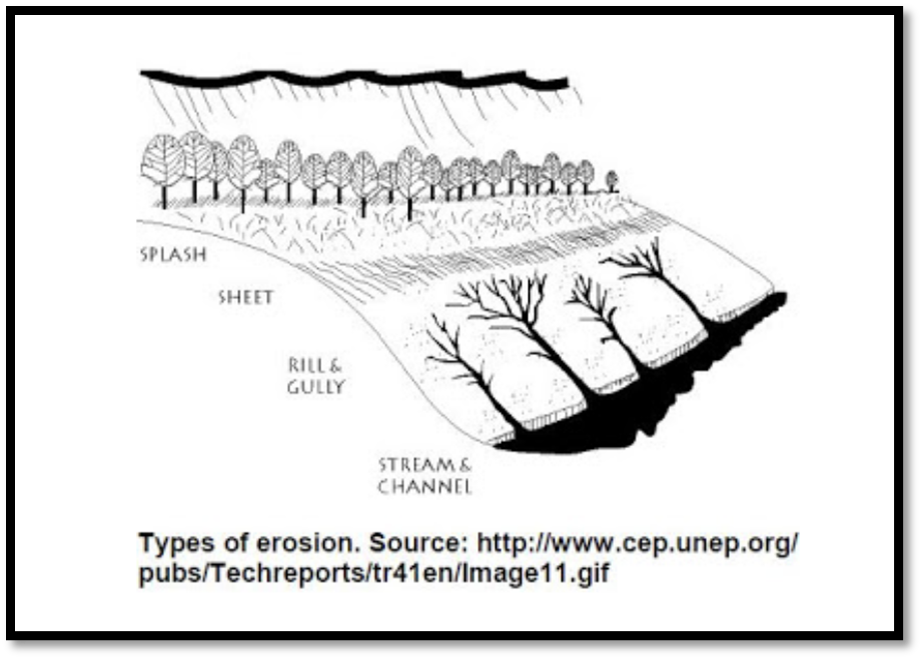
Illinois soils are some of the most fertile and desirable soils in the world. Soils—comprised of minerals and organic matter—are heavily influenced by climate (water, temperature), biology, humans and time. Illinois soils were largely shaped and influenced by the glacial activity that took place prior to modern cultivation. This activity allowed Illinois soils to develop deep soil layers of the A horizon, B horizon and organic matter. It’s these layers that allow for high crop productivity in the modern agriculture production era.
Soil Organic Matter is comprised of dead plant parts, living plant parts and living microorganisms. It’s the organic matter that influences mineralization (releasing plant available nutrients), water infiltration and soil tilth, and provides shelter for soil microorganisms.
To say that soil “health, quality and quantity” is the foundation of our civilization is an understatement. A civilization that can be self-sufficient and feed its population will be successful. With a quick internet search or conversation with an agronomist, one will quickly learn that Illinois has some of the best soil not only in the country, but in the world. During this conversation, one may understand how other countries and civilizations struggle to produce a quality food source for their people, basically due to the “health, quality and quantity” of their soil. One might even conclude that highly productive soils in Illinois need to be protected for many generations to come.
Anything of high value will always have a threat, and productive soils have a threat from erosion. Soil erosion is the process of physically removing soil particles from their desired location. Examples might be soil in the middle of a field being moved to a field edge or filling in a lake or taking a long journey to the Gulf of Mexico. Soils primarily move through water and wind erosion.
Once water hits the soil surface, it has a strong desire to run. It’s the degree of slope that will determine the speed. The combination of the amount of water, the speed of water and the vulnerability of the soil surface will influence the degree of soil erosion impact. Publications have suggested that by leaving roughly 20% surface cover, soil erosion could be reduced by as much as 50% (Modern Corn & Soybean Production).
It’s our responsibility as farmers, the agriculture industry and modern civilization to preserve Illinois soils for current and future generations. I leave you with some considerations:
- How will this tillage pass impact water erosion of my soils?
- How will this tillage pass impact wind erosion of my soils?
- How will this crop rotation impact soil erosion?
- How will this cover crop influence soil erosion?
- On a scale of 1-10 (10 being worst) how vulnerable are my soils to being lost?
 Illinois soils are some of the most fertile and desirable soils in the world. Soils—comprised of minerals and organic matter—are heavily influenced by climate (water, temperature), biology, humans and time. Illinois soils were largely shaped and influenced by the glacial activity that took place prior to modern cultivation. This activity allowed Illinois soils to develop deep soil layers of the A horizon, B horizon and organic matter. It’s these layers that allow for high crop productivity in the modern agriculture production era.
Illinois soils are some of the most fertile and desirable soils in the world. Soils—comprised of minerals and organic matter—are heavily influenced by climate (water, temperature), biology, humans and time. Illinois soils were largely shaped and influenced by the glacial activity that took place prior to modern cultivation. This activity allowed Illinois soils to develop deep soil layers of the A horizon, B horizon and organic matter. It’s these layers that allow for high crop productivity in the modern agriculture production era.





 and then
and then